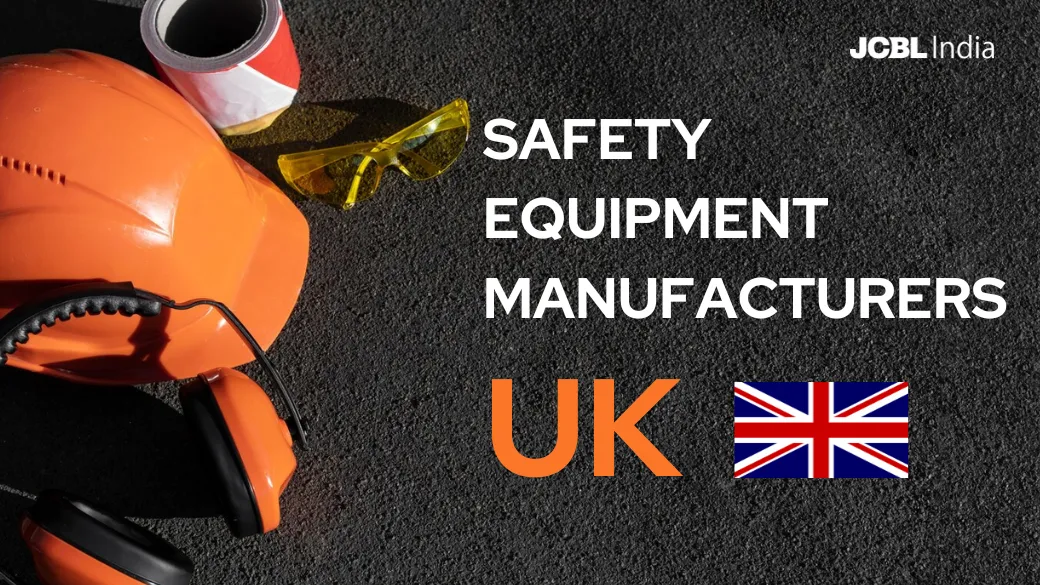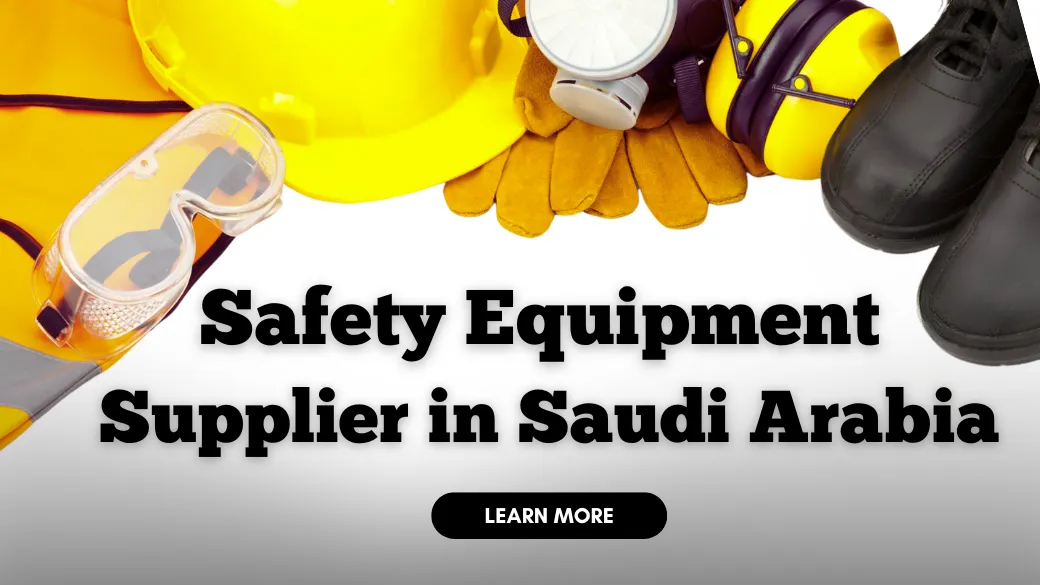Choosing the Right Safety Shoes for Your Industry

In industries where physical labor is routine and hazards are ever-present, even a single oversight can lead to serious injury. Among all personal protective equipment (PPE), safety shoes are one of the most essential—but often overlooked—components. Think about it: your feet are in constant motion throughout the day, exposed to risks ranging from falling objects to slippery surfaces, electrical hazards to chemical spills. Choosing the right safety shoes isn’t just about compliance with safety standards—it’s about comfort, performance, and long-term protection. But with so many types and features available, how do you select the right one for your job?
In this blog, we’ll guide you on choosing the right safety shoes for your industry, common buying mistakes, and why JCBL Hand Tools’ safety shoes are the go-to choice for professionals across industries.
Role of Safety Footwear in Workplace Safety
According to global workplace safety data, over 10% of disabling workplace injuries are related to foot injuries. These include crushed toes, punctures, slips, trips, burns, and sprains—many of which can be avoided with the correct safety footwear.
Here’s what the right safety shoes protect you from:
- Impact Injuries: Dropped tools, heavy machinery, or falling materials can cause serious trauma.
- Compression Injuries: Getting feet caught under rolling objects like trolleys or forklifts.
- Punctures: Sharp objects like nails, glass, or scrap metal on the floor.
- Slips and Falls: Slippery or uneven surfaces can lead to fractures or back injuries.
- Chemical & Electrical Hazards: Exposure to corrosive chemicals or live wires can cause severe burns or electrocution.
Safety footwear acts as a barrier between workers and unpredictable workplace risks, and choosing the right type ensures maximum safety without compromising comfort.
Understanding the key components of safety shoes
Before choosing safety shoes, it’s essential to understand what makes a pair reliable and protective. Here are the core components that determine their functionality:
Toe Cap
This is the most critical safety feature:
- Steel Toe Caps: Provide robust protection (up to 200 joules impact resistance) and are ideal for heavy-duty industries.
- Composite Toe Caps: Made of non-metallic materials like Kevlar, plastic, or carbon fiber. They’re lightweight, non-conductive, and airport-friendly.
Sole Construction
Different soles are designed for different types of environments:
- Single Density PU Sole: Lightweight and flexible, best for indoor or medium-duty usage.
- Double Density PU Sole: Offers enhanced durability, abrasion resistance, and shock absorption. Ideal for rough terrains and heavy-duty environments.
Upper Material
The upper part of the shoe determines breathability, durability, and water resistance:
- Grain Leather (like Barton Printed or Fine Grain): Durable, water-resistant, and allows feet to breathe.
- Synthetic Materials: Lighter but may offer less protection over time.
Insole and Lining
Comfort and hygiene go hand-in-hand:
- EVA Laminated Insocks: Soft and shock-absorbent.
- Canvas Insoles: Provide added comfort and sweat absorption.
- Mesh Linings: Enhance airflow and keep the feet cool during long hours.
Closure System
- Lace-up with Metal Eyelets: Ensures a secure fit.
- D-Ring or Quick Lace Systems: Provide speed and ease of wear, suitable for fast-paced environments.
Types of safety shoes
Choosing the right type of safety footwear depends on your job role, environment, and the level of risk involved. Here are the most common types of safety shoes and where they best fit:
Heavy-Duty Boots
Heavy-duty safety boots are built for the toughest environments. They typically feature steel or composite toe caps, double-density PU soles, and high-grade leather uppers. These shoes are designed to withstand high impacts, compression, punctures, and harsh weather conditions. Their rugged build ensures superior ankle support and slip resistance, making them ideal for environments with uneven terrain and falling object risks.
Medium-Duty Shoes
Medium-duty safety shoes strike a balance between durability and comfort. They provide essential toe protection along with anti-slip and abrasion-resistant soles, making them suitable for factory floors and workshop environments. These shoes often feature breathable linings and padded insoles, offering day-long comfort for technicians, assemblers, and machine operators who are constantly on their feet.
Light-Duty Footwear
Designed for environments with minimal risk, light-duty safety shoes are lightweight and comfortable without compromising on basic protection. They usually include a 100-joule toe cap, single-density PU sole, and a breathable upper. Ideal for roles that involve walking, standing, and carrying lightweight goods, these shoes offer flexibility and fatigue-free movement during extended work hours.
Oxford Style Safety Shoes
Oxford-style safety shoes are perfect for professionals who require formal styling without compromising safety. These shoes feature protective toe caps and anti-slip soles but come in a sleek, polished finish suitable for both meetings and floor visits. Their smart-casual design makes them a preferred choice for managerial staff, field engineers, or facility inspectors.
Slip-On Safety Shoes
Slip-on safety shoes are crafted for environments that demand cleanliness, quick transitions, and frequent wear and removal. With a laceless design, they’re easy to sanitize and convenient for fast-paced work. These shoes often come with anti-static soles, water-resistant uppers, and composite toe protection—ideal for jobs that require hygiene compliance and comfort without compromising on safety.
Match your industry with the right safety shoe type
Choosing the right safety footwear starts with understanding your work environment. Here’s a quick guide to matching the right type of shoe with your industry needs:
Construction, Mining & Oil/Gas: Heavy-Duty Safety Boots
These high-risk industries demand maximum protection. Heavy-duty boots with double-density PU soles, thick leather uppers, and steel/composite toe caps offer resistance against impacts, slips, and harsh conditions. They’re ideal for rugged terrains and jobs involving heavy machinery.
Manufacturing & Mechanical Workshops: Medium-Duty Safety Shoes
Workshops and production units involve moderate risk—oil spills, heat, and sharp objects. Medium-duty shoes provide anti-slip soles, toe protection, and breathable comfort, making them suitable for machinists, fabricators, and technicians.
Warehousing, Logistics & Retail Backend: Light-Duty Footwear
For roles requiring speed and flexibility, light-duty shoes offer lightweight construction, cushioned soles, and basic toe protection. They’re perfect for long hours of walking, standing, and handling lightweight goods.
Corporate-Industrial Roles: Oxford Style Safety Shoes
Professionals moving between office and shop floors need style with safety. Oxford safety shoes provide a formal look with steel/composite toe protection and slip resistance—ideal for supervisors and site inspectors.
Food Industry, Cleanrooms & Healthcare: Slip-On Safety Shoes
In hygiene-sensitive areas, slip-on shoes are easy to clean, quick to wear, and reduce contamination risks. These shoes often feature anti-static soles and water-resistant uppers, offering comfort and safety for food handlers and lab technicians.
Commercial Kitchens & Hospitality: Slip-Resistant Light Safety Footwear
Fast-paced kitchen environments require non-slip, lightweight shoes for mobility and comfort. A soft toe cap and cushioned insole add extra protection during long, demanding shifts.
Common mistakes to avoid when buying safety shoes
Many workers or managers buy safety footwear based on price, style, or brand reputation alone. Here’s what you should not do:
- Neglecting Certification Standards: Make sure the shoes comply with safety standards like EN ISO 20345 or ASTM F2413. A shoe without certification could be a legal and safety liability.
- Ignoring Industry-Specific Risks: Electrical workers, for example, should not wear steel-toe shoes unless they’re anti-static or EH rated. Always check compatibility with job hazards.
- Overlooking Fit and Comfort: A poor fit can cause blisters, back pain, and even accidents due to poor grip or fatigue.
- Focusing Only on Price: Cheaper shoes may lack durable materials or proper construction, leading to frequent replacements and higher long-term costs.
- Assuming All Safety Shoes Are the Same: Different jobs require different features—one-size-fits-all does not work in workplace safety.
JCBL Hand Tools: Safety Shoes Engineered for Every Need
At JCBL Hand Tools, we understand that safety, durability, and comfort should come together in every step. Our safety equipment, specifically footwear, is designed by experts, built with premium materials, and tested to meet international safety standards.
Why Choose JCBL Safety Shoes?
- EN Certified: All products comply with EN ISO 20345 standards.
- Durability: High-quality leather and PU soles for long life.
- Wide Range: From heavy-duty boots to stylish Oxford shoes.
- Industry-Focused Design: Shoes are developed based on real-world feedback and workplace conditions.
Our Range of safety shoes includes the following:
J-ASTRA-DD
J-ASTRA_DD is a rugged, heavy-duty safety shoe crafted from durable leather and built with a dual-density PU sole. It offers reinforced impact protection, making it perfect for high-risk environments like construction sites, infrastructure projects, and mining operations.
J-CONQUER-DD
Designed for medium-duty industrial use, the J-CONQUER_DD shoe balances strength and comfort. Its durable leather upper and breathable lining make it an ideal choice for fabrication units, workshops, and mechanical tasks.
J-CONQUER OXFORD
Combining style and functionality, the J-CONQUER OXFORD shoe is suited for professionals who need both protection and a polished appearance. It’s perfect for indoor technicians, factory supervisors, and electrical engineers.
J-PIKE
J-PIKE is a lightweight safety shoe that delivers essential protection without compromising mobility. Tailored for warehousing, logistics, and light assembly jobs, it supports agility during long shifts.
J-SLING
J-SLING is a wide-fit, light-duty safety shoe offering basic toe protection and maximum comfort. It’s best suited for roles in low-risk environments that require prolonged standing or walking.
With JCBL Hand Tools, you don’t just get a pair of shoes—you invest in safer workspaces, higher productivity, and long-term peace of mind.
Conclusion
Choosing the right safety shoe isn’t about picking the most rugged pair—it’s about understanding your environment, job hazards, and comfort needs. Whether you’re lifting steel bars or managing warehouse stock, the right footwear can protect you from injury, improve your performance, and keep you on your feet longer.
JCBL Hand Tools brings a complete safety shoe solution built with performance, style, and certified protection, making us a trusted partner for industries across the globe.
Contact us at +91-9815579321 or email us at handtools@jcbl.com for bulk orders or dealership inquiries.
FAQ’s
Q1. How do I know which safety shoe is right for my job?
Check your work environment for risks (impact, compression, chemical, electrical). Then choose a certified shoe that addresses those risks.
Q2. What is the difference between steel-toe and composite toe?
Steel-toe offers strong protection but is heavier and conducts electricity. Composite toe is lighter, non-metallic, and ideal for electrical or airport environments.
Q3. How long do safety shoes last?
Typically 6–12 months, depending on usage. Inspect regularly for wear and tear.



